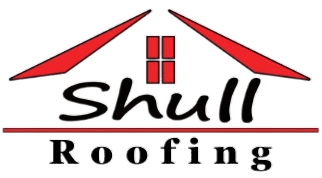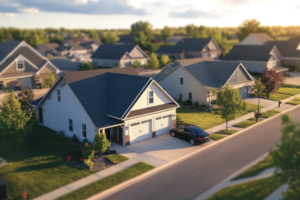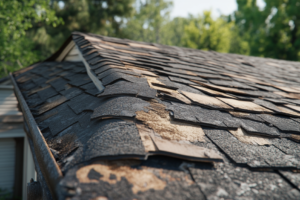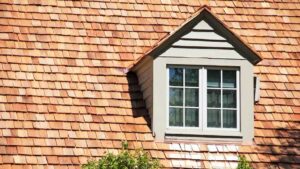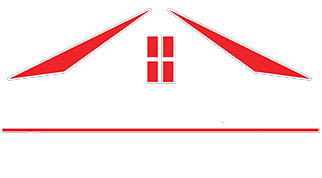When severe weather strikes your area, the aftermath can be extremely distressing. Here at Shull Roofing, a reliable Hoisington roofing contractor, we understand the stress and are dedicated to offering help and reassurance. We’ve developed clear guidelines to alleviate uncertainties, ensuring a more streamlined experience for you during these challenging times.
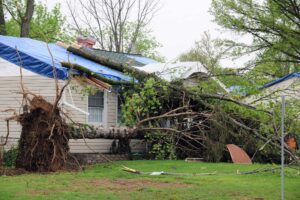
Types of Storms
Tree/Debris Damage
Trees or branches falling on roofs can cause significant damage, compromising their integrity and safety. This damage includes harm to shingles, flashing, and potentially the gutter system. Our tree damage roof repair services involve prompt assessment, debris removal, and comprehensive emergency roof repairs to restore structural stability and functionality to your roof.
Water Damage
In Great Bend, KS, roofs are vulnerable to water damage from leaks, rot, mold, ice dams, and more, often caused by damaged shingles, cracked flashing, or poor drainage. Homeowners must hire a skilled roofing contractor to detect and fix these issues promptly, preserving their roofs’ durability and functionality.
Hail Damage
Hail poses a significant risk to roofs, potentially causing structural issues and reducing their lifespan. Hailstones vary in size, with even small ones capable of damaging roofs over time, leading to problems such as broken windows and water infiltration. Detecting hail damage can be challenging and may only become apparent after multiple hailstorms.
Wind Damage
Strong winds can severely impact your roof’s durability, leading to problems like shingle displacement, water leaks, and structural harm. Ignoring wind damage can result in costly repairs and leaks. Preventing wind damage requires proper roof installation, maintenance, and use of sturdy materials. Regular inspections and swift wind damage repairs improve your roof’s ability to endure strong winds, safeguarding your home from potential damage.

Tips for Storm Aftermath
Tip #1: Stay Calm and Safe
After storm damage at home, staying safe and composed is crucial for personal safety and rational assessment of the situation. A calm mindset facilitates clear thinking, aiding in prioritizing tasks like seeking professional help and securing the property. It also helps prevent further damage by enabling strategic measures such as temporary repairs or fortifying vulnerable areas.
Tip #2: Make Temporary Fixes, if safe
When dealing with storm damage, you may want to try and do small, safe, and temporary fixes until you can get a professional out to do a full consultation. Assess the damage by identifying immediate safety concerns and prioritizing urgent areas. Secure hazardous zones and perform temporary repairs to minimize further damage, such as covering broken windows and patching roof leaks. Wear safety gear, exercise caution with electricity, and document the damage for insurance purposes before seeking professional help for thorough repairs.
Tip #3: Contact a Professional Roofing Company
Contacting a professional roofing company after storm damage ensures accurate assessment and comprehensive repairs due to their expertise. Their focus on safety reduces the risk of accidents, and their use of high-quality materials ensures long-lasting protection for your roof. Additionally, they can assist with insurance claims and often provide warranties for added peace of mind.
Tip #4: Contact Homeowners Insurance
Contacting homeowners insurance after storm damage is crucial for coverage assessment, financial assistance, and navigating the claims process efficiently. Insurance representatives provide professional guidance, helping homeowners understand coverage limits and maximize compensation for necessary repairs or replacements, ultimately reducing the financial burden and expediting the restoration process.
At Shull Roofing, we are dedicated to delivering unparalleled customer satisfaction, expert craftsmanship, and restoring integrity to the roofing sector. Take the first step towards a consultation by reaching out to us today!
